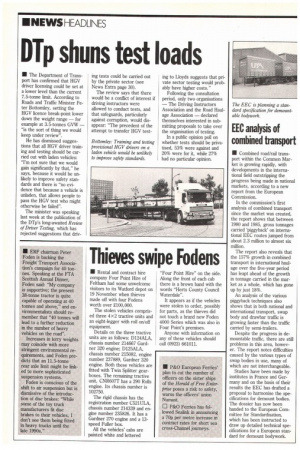Dip shuns test loads
Page 8

If you've noticed an error in this article please click here to report it so we can fix it.
• The Department of Transport has confirmed that HGV driver licensing could be set at a lower level than the current 7.5-tonne limit. According to Roads and Traffic Minister Peter Bottomley, setting the HGV licence break-point lower down the weight range — for example at 3.5-tonnes GVW — "is the sort of thing we would keep under review".
He has dismissed suggestions that all HGV driver training and testing should be carried out with laden vehicles: "I'm not sure that we would gain significantly by that," he says, because it would be unlikely to improve safety standards and there is "no evidence that because a vehicle is unladen, that allows people to pass the HGV test who might otherwise be failed".
The minister was speaking last week at the publication of the Dip's long-awaited Review of Driver Testing, which has rejected suggestions that driv ing tests could be carried out by the private sector (see News Extra page 30).
The review says that there would be a conflict of interest if driving instructors were allowed to conduct tests, and that safeguards, particularly against corruption, would disappear "The precedent of the attempt to transfer HGV test ing to Lloyds suggests that private sector testing would probably have higher costs."
Following the consultation period, only two organisations — The Driving Instructors Association and the Road Haulage Association — declared themselves interested in submitting proposals to take over the organisation of testing.
In a public opinion poll on whether tests should be privatised, 53% were against and 20% were for it, while 27% had no particular opinion.








































































































































